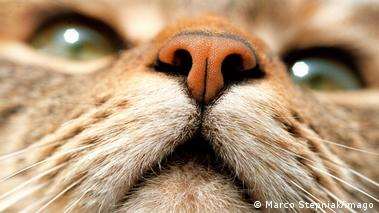
June 30, 2023, 5:30 PM
June 30, 2023, 5:30 PM
The cat’s nose is made up of a set of tightly coiled bony structures of the airways that parallels with a chemical analysis equipment called chromatographs of gases in a parallel spiral.
The authors of a study published in Plos Computational Biology analyzed the function of this complex feline nasal structurefor which they used computer simulations that provide new insights into the evolution of mammals.
The study, coordinated by Ohio State University (USA), suggests that the convoluted nasal structures of cats work in a similar way to parallel spiral gas chromatographs, which are laboratory equipment used for highly efficient analysis of chemical composition of the substances.
The team found that, in the case of cats, the air is separated into two flow streams, one that is cleaned and humidifies and another that carries the odorant quickly and efficiently to the olfactory region.
Chromatographs also detect and separate chemicals in vaporized form, and the efficiency of the basic technique is increased by the use of multiple tubes branching from a high-velocity gas stream.
If a cat’s nose only had a straight tube for scent detection, it would have to be longer than the physical size of the head allows for it to be as effective as it appears to be.
These findings deepen our understanding of how the evolution of more convoluted canals allowed mammals, especially cats, to improve your sense of smell, indicates the study.
The team developed an anatomically accurate three-dimensional computer model of a domestic cat’s nose, using techniques such as high-resolution microcomputed tomography scanners of a real feline’s nose and computational fluid dynamics modelling.
The evolutionary presence of coiled olfactory turbinate channels in mammalian noses remarkably resembles another sensory organ, the snail-like coiled cochlea, which is also unique to mammals, the researchers noted.
The evolution of the mammalian cochlea improves hearing sensitivity and frequency range, so they believe that the “olfactory cochlea” can similarly improve that sense.
















